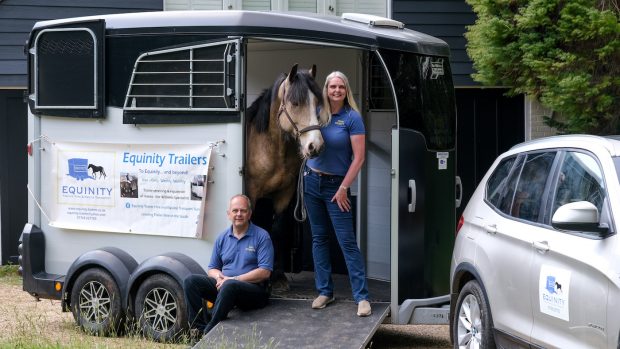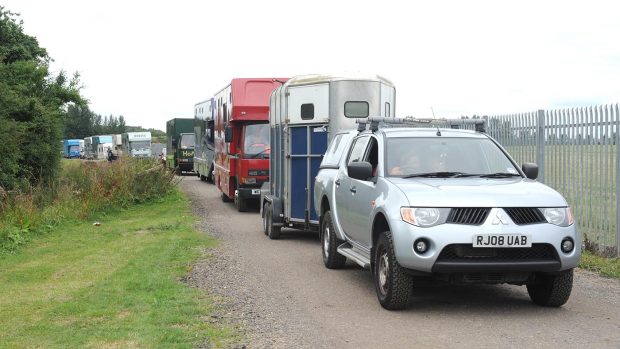In Partnership with Subaru
The freedom of taking your horse out on your own can be a liberating experience, but for others it can be a daunting prospect. Whether you’re going for a lesson, heading off to enjoy better hacking away from your usual routes, going hunting, competing at any level or taking your horse to the vet in an emergency, knowing that you are well prepared and sufficiently equipped is the best way of making the experience more pleasurable — or at least less stressful than it might otherwise be.
So to help you on your way, Horse & Hound takes a look at ways to help ensure the safety of you, your horse and other road users while towing.
Selecting your towing vehicle
Once you’ve had the inevitable “trailer versus lorry” debate and decided that the trailer option is the route for you, you may need to consider selection of a suitable towing vehicle. In all likelihood, it will have to double-up as a regular mode of transport when not attached to a trailer, so it’s sensible to look for something that offers other benefits to daily driving such as comfort and durability. Fuel economy and safety features are two other main considerations, along with space for other passengers, luggage and any dogs that may like to travel with you.
With regards to comfort for your horse, it is worth thinking about the terrain you are likely to encounter when you are out and about. Not all venues have level parking on hard standing so it’s worth finding out about the off-road ability of the car. Take into account you may have to park on a hill in muddy conditions, perhaps going across rutted gateways where other vehicles may have previously got stuck and been towed in, so you will need sufficient clearance as well as all-wheel drive.
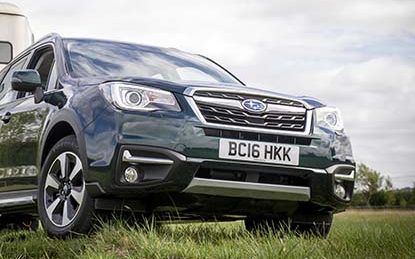
Knowing you have a vehicle with the ability to encounter those conditions without faltering gives peace of mind to even the most novice drivers and can make the experience for your horse in the back much better too.
The legalities
Before setting off on any journey, it is vital that various checks take place on both the towing vehicle and the trailer.
Aside from having the correct driving qualifications and insurance to legally tow a trailer, you must ensure the towing vehicle is capable of pulling the weight of your trailer and your horse. The vehicle’s handbook should be able to guide you on this.
As a rough guide, many vehicles have a maximum towing capacity of 2000kg. This will comfortably tow the average horse trailer that weighs approx 1000kg, plus one 16.3hh TB weighing 600km.
Other items such as tack, grooming kit and water can be stored in the trailer using the additional weight allowance, although you should be careful not to overload the front axle — which can lead to “snaking” where the vehicle sways from side to side — and always ensure the load is secure so it can’t become dislodged while travelling and get under your horse’s feet.
Maintenance
It’s recommend that you have your trailer — and your towing vehicle — professionally serviced annually to check for wear and tear. However you should also perform the following safety checks yourself before loading a horse into any trailer:
- Ensure the floor is inspected for signs of wear and damage.
- Tyre pressures should be checked regularly and wheel nuts tightened. Don’t forget to include the spare wheel.
- Check the partitions and breast bars are safely fixed into position and there is no internal damage to other parts that could cause injury to your horse.
- Make sure the engine oil and water levels are correct on the towing vehicle – engines have to work harder than usual when towing, particularly up steep hills.
Hitching up
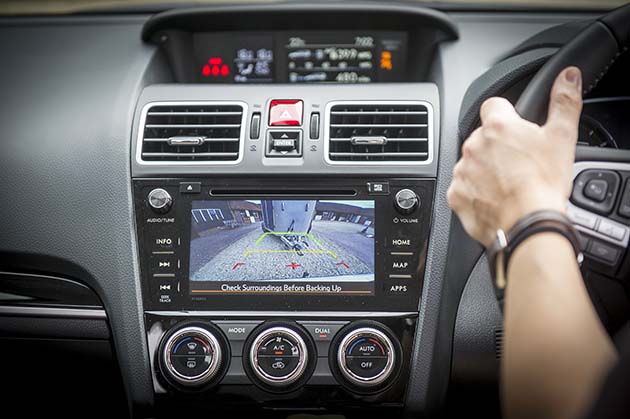
In the absence of an assistant to guide you into exactly the right spot for hitching up, practice is the only way to get this right. Use your wing mirrors to keep you straight as you reverse up — you will probably have to stop several times to get out and check you are heading in the right direction.
If you have reverse parking sensors it’s probably wise to switch them off during this manoeuvre because they are likely to start bleeping some distance from the trailer and make you paranoid you’re about to crash!
A vehicle equipped with a reversing camera is the ultimate luxury. This can save time and prevent frustration at being “nearly but not quite” in the right spot… they are highly recommended if they are on the “options” list.
Additional safety tips for once you’re attached to the vehicle:
- Once the electric connector is in place, check the lights are working on the towing vehicle and the trailer before departure.
- Ensure the jockey wheel is raised and secured.
- Attach the breakaway cable to the specific tow bar loop or the hook on the rear of the towing vehicle.
- The handbrake will also need releasing before moving off, although many people do not engage these when parking trailers up for long periods of time to prevent the brakes from seizing on.
- Ensure the correct number plate is displayed on the back of your trailer
- Remember to remove any security wheel clamps that may be attached – this can turn ugly if you drive off with them on!
- It’s always worth having a test of the brakes before loading your horse up, just to ensure they are functioning properly.
Reversing
If you have any concerns about having to reverse your trailer — which is inevitable at some point — it’s best to take yourself off somewhere with some space with your empty trailer and practice on your own. We’ve all heard people barking “left hand down a bit” shortly followed by “no, the other way” at some poor person who is going backwards with the trailer at a jaunty angle and it only leads to frustration and confusion!
A field or an empty car park can be ideal the ideal place to start so you can make mistakes and learn from them. Just remember to take your time and if it goes wrong, pull forward and have another go… it does all fall into place eventually.
Loading and travelling
Ideally you would always have an assistant on-hand when loading to help put the ramp up once your horse is safely in, however if you are going to be loading on your own, it is best to practice beforehand so your horse is familiar with the procedure.
Equip him with the necessary travel boots and tail protection and get the hang of loading then putting the ramp up afterwards. Make sure you have the side door unlocked so you can get out that way if necessary. Taking a short journey “around the block” even when you aren’t under any time constraints is always a good way to familiarise yourself and your horse with the towing experience.
Be prepared
Nobody knows what may happen when out on the open road so always be prepared. Plan your route and take a roadmap however if you’re lucky enough to have satellite navigation — which hopefully will alleviate some stress of following a map — make sure you input the address details in before you set off.
Carry details of your breakdown cover with you along with any other numbers you may require in an emergency. Remember that when towing a trailer the recovery of your horses isn’t usually covered so you may need additional membership of a rescue scheme.
Stopping with a fully-loaded trailer doesn’t happen as quickly as you will be used to so think ahead and try to anticipate what’s going to happen on the road in front of you.
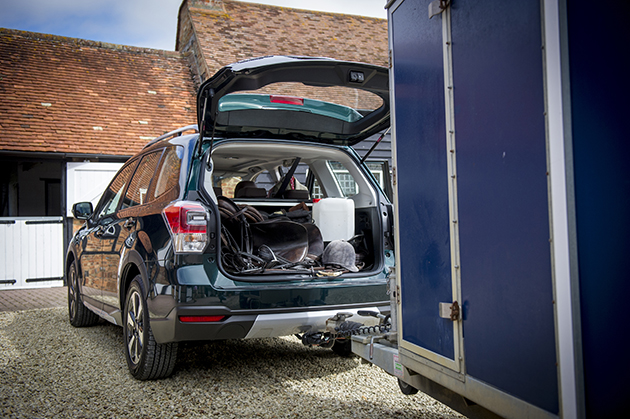
And finally…once you get the hang of it, taking your horse out for the day can be very rewarding so don’t give up — use the right equipment, carry out your safety checks and before you know it you’ll be heading off somewhere different at every opportunity!
The Special Edition Subaru Forester in Hunter Green used in these images has satellite navigation and reversing cameras fitted as standard. To find out more visit www.subaru.co.uk/huntergreen



